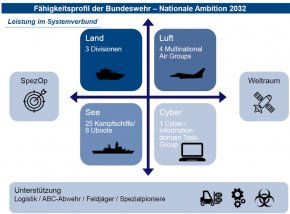The fonds is to be established in a way where money is put in immediately, and the Bundeswehr can continue to draw on it until it's empty or until a deadline sometime in a couple years has passed (unlike the budget, which after all has to be strictly accounted as spent by the end of a given year). How it will/can be used will depend on its precise wording when passed - usually law bills for establishment of such fonds are fairly concise overall and explicit in naming the purpose.Maybe Herr Scholz should do if for two years in a row.
Of course the "100 billion" number itself was mostly chosen for effect, having a nice, big, round number to present.
It's about the amount that the government usually keeps sorta available through budgetary means for special circumstances (crisis-of-the-day), and that it reserves the right to use debts to get (target number for overall federal budget is zero-debt after all). In the last two years it was mostly spent on the pandemic, in 2015/16 for example on the refugee crisis.


